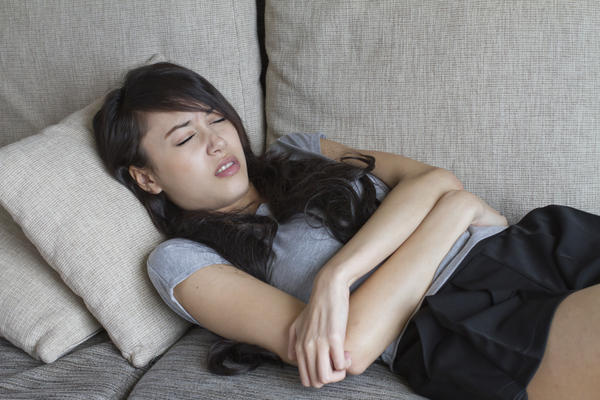Having your period can be quite an annoying situation because it can affect the quality of your life. A surprising visit can make things even more frustrating. There is no scientific way to determine when your period will come. However, you can use certain ways to get an idea about the arrival of your period. Keep reading to learn how to know when your period is coming and how you can estimate the length of your menstrual cycle.

How to Know When Your Period Is Coming
1. Keep a Record
You need to count the number of days between the first day of your period and the first day of your next period. This determines your cycle length, which for most women is 28 days, but it can be anywhere between 25 and 35 days. Once you know the first and last days of your period, keep a record of it. Highlight these days on a calendar to get an idea of when your next period might come.
2. Watch for Signs
The levels of hormones change before you actually experience menstruation. It means that your body will experience certain changes as well. Most women notice the following signs before their period arrives.
- Tummy Trouble
You may feel bloated before your period. This may also accompany with constipation or diarrhea, as well as nausea and cramps. You may also start craving specific foods right before your period arrives.
- Emotional Rollercoaster
You will notice severe mood swings before the arrival of your period. Even though you do not call yourself a drama queen, you will certainly act like one. You may feel more irritated and even have trouble sleeping. Some girls may have trouble concentrating.
- Skin Issues
Are you noticing extra acne popping out on your face? This could mean your period is right around the corner. This usually happens due to your hormones going wild. Swelling on your hands, face and feet is also common. Some girls may also notice their breasts becoming a bit tender in the days leading up to their periods.
- Other Signs
You may also feel more achy and tired before your period. Headaches are also common during this time. Your allergies may become worse before your period comes. All these signs will help you understand how to know when your period is coming.
What Do Other Women Say?
Periods can be extremely crafty and may catch you unprepared. It is never easy to tell exactly when you will have your next period. I usually feel extremely tired a couple of days before the arrival of my period. I also tend to feel weepier with boobs getting sore. I notice these signs almost every time before my period. When this happens, I prepare myself to avoid any surprises. I suggest wearing a thin panty liner if your periods are unpredictable to avoid staining your underwear.
I take birth control pill, so my period is quite regular. How to know when your period is coming? I believe the best way is to keep track of your cycles. Maintain a journal. Write it on paper. You can even buy a special calendar for this. Several online sites and mobile apps also help you track your cycle free of cost. In my case, I usually get light cramping when my period is around the corner. Still, I recommend keeping a pad or tampon in your purse to be on the safe side.
How to Relieve Premenstrual Syndrome
Premenstrual syndrome (PMS) is your body's normal response to the change in hormones that occurs before your period. For some women, it is difficult to deal with these changes. If your symptoms are making it difficult for you to concentrate and continue with your normal activities, you may want to talk to your doctor. Here are some ways to relieve your symptoms.
1. Take Calcium Carbonate
Taking calcium carbonate on a regular basis will help treat PMS. You need to take at least 1500 mg a day to reduce symptoms of depression, moodiness, pain and food craving. The dose of calcium will also help strengthen your bones and prevent mineral loss.
2. Eat a Wholesome Diet
It is not enough to learn how to know when your period is coming. You need to pay attention to your diet to reduce your symptoms and discomfort. Eating vegetables, fruits and whole grain will also help relieve PMS symptoms. Increase your fluid intake and cut down on salt. Avoid caffeine to reduce breast pain and swelling. Limiting your alcohol and sugar intake will lessen food cravings.
3. Reduce Stress
Take steps to reduce stress because stress can make your symptoms even worse. Regular exercise and relaxation techniques such as meditation, yoga and biofeedback may help as well. Exercise triggers the release of endorphins that act as painkillers.
4. Take OTC Pain Relievers
You can reduce headaches, cramps and muscle pain by taking OTC remedies like ibuprofen, aspiring and naproxen. Stronger prescription medications may be required in case regular OTC pain relievers do not work. Taking these medications thrice a day for 3-4 days will reduce swelling and alleviate pain as well.
5. Try Low Doses of Antidepressants
If you are already suffering from premenstrual dysphoric disorder, you may benefit from low doses of antidepressants. This will help treat symptoms such as fatigue, irritability, depression and disturbed sleep.
6. Other Options
Some additional options include iron supplements, progesterone suppositories, diuretics, the vitamin E and B6 supplements. These therapies may work but are controversial. Therefore, it is important to talk to your doctor before you choose one of these treatment options.
